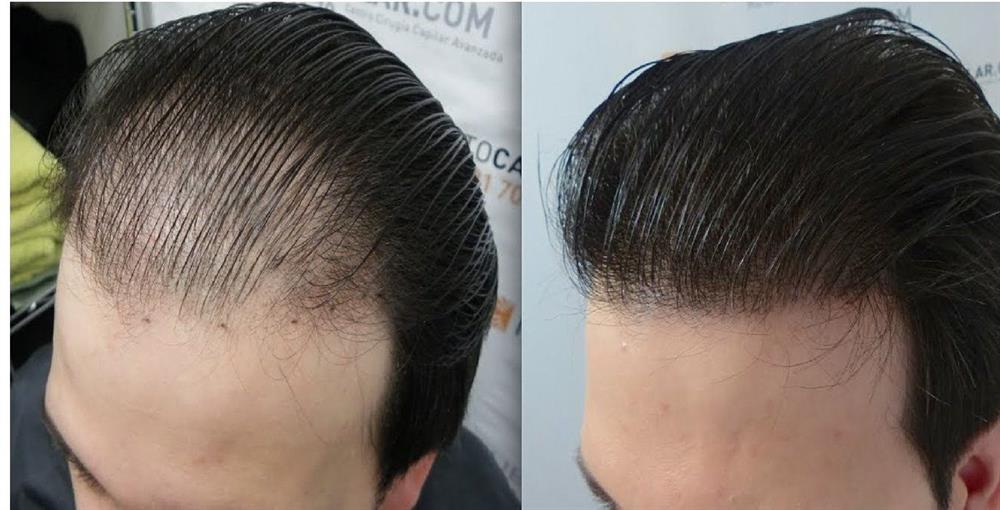
A hair transplant is a minimally invasive procedure used to restore hair loss and baldness. During the procedure, a doctor will take healthy hairs from the donor area, usually the back and sides of the scalp, and transplant them to the balding or thinning areas of the scalp. The transplanted hairs will then grow as normal and will last for a lifetime.
Hair transplantation is a safe and effective procedure, but it is important to understand the risks associated with the procedure before undergoing it. It is also important to choose a qualified doctor who is experienced in the procedure.
Hair transplantation has complications such as pain and bleeding, infection, scars and scars, etc. Most of the side effects are preventable or temporary and can be easily treated if they occur.
Hair transplantation has complications such as pain and bleeding, infection, scars and scars, etc. Most of the side effects are preventable or temporary and can be easily treated if they occur. Choosing a good surgeon and following the necessary care after the operation greatly reduces the chance of effects.
Many people, especially men, use a variety of hair transplant methods to compensate for hair loss and baldness. In the hair transplant operation, the surgeon transfers hair follicles from a part of the head or body to the part where baldness has occurred. Although hair transplantation seems to be a simple procedure, it has effects like any other surgery. Are you familiar with the effects of hair transplantation? Does hair implantation hurt? Will we face hair loss after implantation?
Consultation with a dermatologist and hair specialist at Doctor TO (your doctor) will inform you about the effects after hair transplantation. You can communicate with the best skin, hair and beauty specialist by phone and online through your doctor and receive the necessary guidance from them. Also, if you need to visit in person, you can get an appointment from the appointment section of the office.
Although the causes of hair loss are very diverse, many people who go for hair implantation are facing baldness or alopecia. Alopecia is an autoimmune disease that is not related to age. This can happen to anyone and more importantly at any age. Baldness is one of the most important causes of hair loss in men and also one of the causes of hair loss in women, which can occur for various reasons, including hormonal changes.
Hair implantation have been helping men and women achieve a new look for years. Compared to other cosmetic surgery methods, hair implantation has few side effects, but if not paid enough attention, it can cause serious side effects. There is a wide range of possible effects of hair implantation, which we will examine below:
1. Pain is one of the most common side effects of hair implantation
Postoperative pain occurs in most patients after hair transplant surgery. This pain is especially greater in FUT (follicular unit transplant) hair transplantation. In this type of surgery, strip removal method is used. Strip removal increases the possibility of damage to peripheral nerves. Therefore, the pain after the hair implantation operation in this way is more than other methods.
In the FUE (follicular unit extraction) method, an average of 3,000 hair units are removed and transplanted over the course of 6 to 8 hours. Muscle pain may occur during this period depending on the lying position. Small breaks should be taken during the process to prevent and reduce pain. Also, to reduce pain, the doctor can use painkillers. To reduce effects after hair transplantation, doctors usually prescribe non-steroidal anti-inflammatory drugs.
Edema (swelling) after surgery is the most common complication of hair transplantation. The average incidence of edema after hair transplant varies from 40 to 50%. Edema can occur due to anesthesia and trauma during the procedure. The swelling of the tissue starts at the time of surgery, but 3 to 5 days later the hair transplant procedure shows itself. Sometimes, the edematous fluid moves into the peri-ocular tissues and causes peri-ocular hemorrhage. Also, in some cases, this edema is so severe that the patient cannot open his eyes.
To prevent and minimize swelling, patients should lie down and sleep in a certain way after the operation. The use of massage, cold compresses, systemic steroids, infiltrating steroids and non-steroidal anti-inflammatory drugs can reduce edema.
Folliculitis is a term used to describe inflammation of the hair follicle in response to infection, physical injury, or chemical exposure. The incidence of folliculitis after hair implantation varies from 1.1 to 20%, and its severity varies from mild and superficial inflammation with mild erythema and scattered pimples.
Infection can occur in the recipient or donor area. The treatment of folliculitis depends on its cause. When a mild folliculitis begins 2 to 3 months after surgery, hair growth is the likely cause. In such cases, initial treatment includes a warm compress for 15 minutes, three times a day, and a topical antibiotic ointment such as mupirocin.